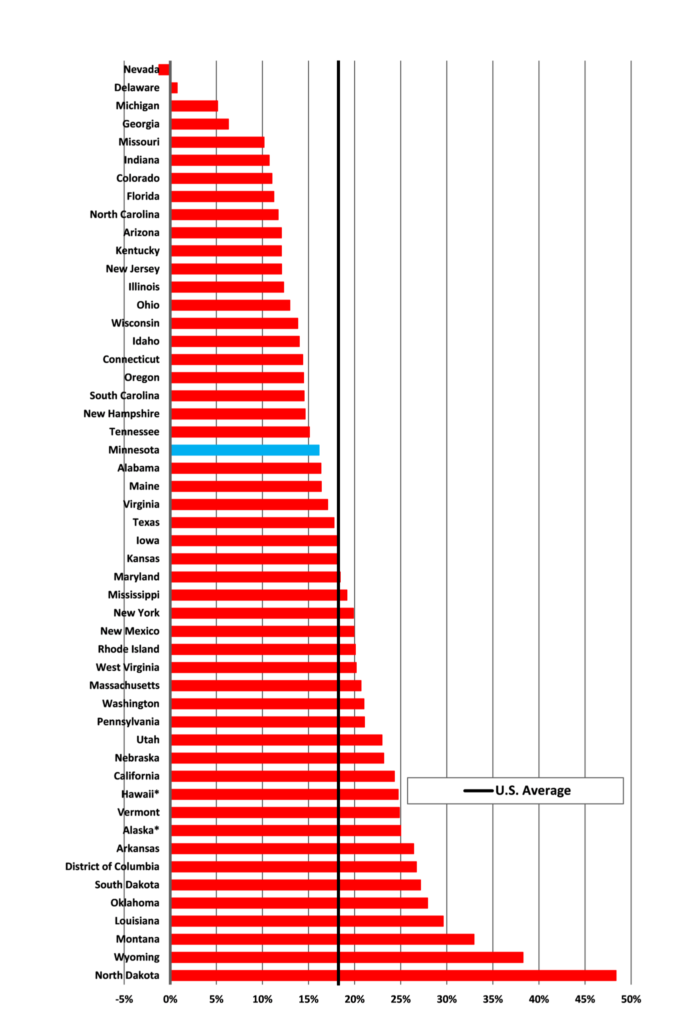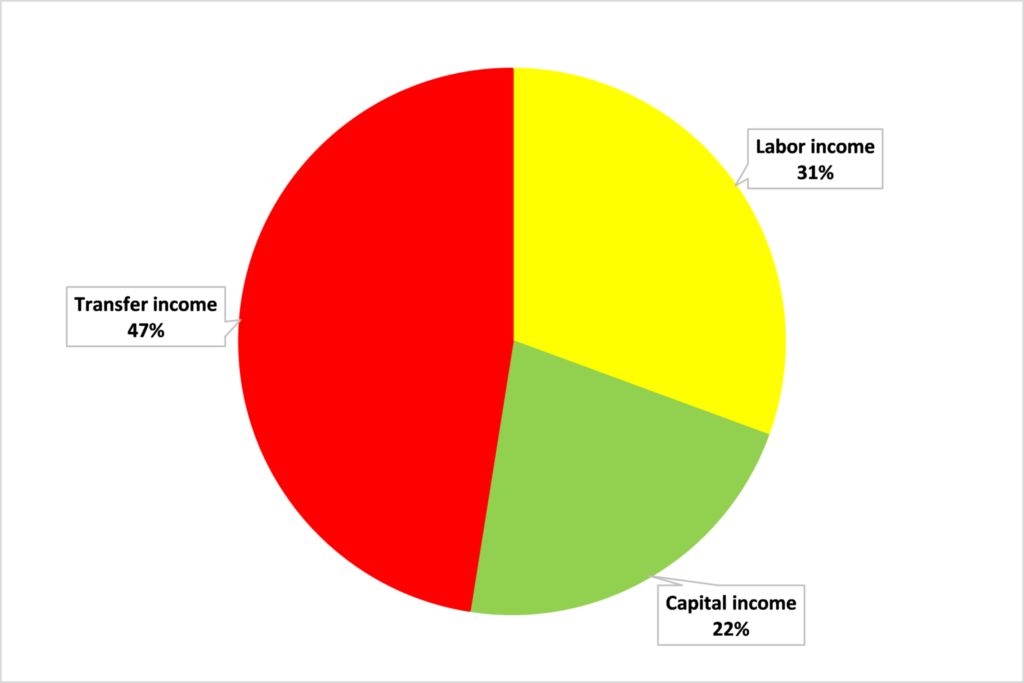Personal Income growth in Minnesota is driven by increases in transfer payments
Last week, the Bureau of Economic Analysis released data on Personal Income for 2017. It revealed the continuation of a disturbing trend for Minnesota’s economy.
Minnesota’s Personal Income growth
The data showed that, on a per capita basis, Personal Income in Minnesota has grown by 16.1% over the period 2000 to 2017. This was behind the national average of 18.3% and ranked Minnesota 30th among the fifty states and District of Columbia.
Figure 1 – Real per capita Personal Income growth, 2000-2017, %

Source: Bureau of Economic Analysis
Sources of Personal Income growth
What has driven this growth?
Personal income can be separated into three categories: labor income, capital income, and transfer income. As Figure 2 shows, Minnesota has experienced much stronger growth in transfer income—e.g., Social Security, Medicaid, Medicare, welfare, and other government program distributions—than in other categories, compared to the nation as a whole. While labor income-wages-increased by 8.2% in real terms in Minnesota between 2000 and 2017, transfer income increased by 69.7%, well ahead of the national rate of 59.9%.
Figure 2 – Real per capita income growth by component of income, 2000-2017, %

Source: Bureau of Economic Analysis
As a result of this, as Figure 3 shows, the growth in government transfer payments accounts for 48 percent of the increase in Minnesota’s Personal Income since 2000. Figure 4 shows that this is a nationwide phenomenon. Across the United States, between 2000 and 2017, transfer income accounted for 47% of the increase in Personal Income.
Figure 3 – Sources of Minnesota’s growth of per capita income by component of income, 2000-2017, %

Source: Bureau of Economic Analysis
Figure 4 – Sources of United States’ growth of per capita income by component of income, 2000-2017, %

Source: Bureau of Economic Analysis
Increasing the transfer share of income is unsustainable
Income received in return for performing labor or renting out capital is good, from an economic perspective. It is income received in return for producing goods or services, and the production of goods and services is what GDP measures. More of this means higher GDP.
Transfer income, by contrast, is not received in return for productive activity. For the transfer of income to take place, the income must first be generated by the productive economic activities of labor and capital. These transfers may be deemed necessary, but it is a worrying sign, both nationally and at the state level, that they comprise an ever growing share of American incomes. Quite simply, this trend is unsustainable.
John Phelan is an economist at Center of the American Experiment.